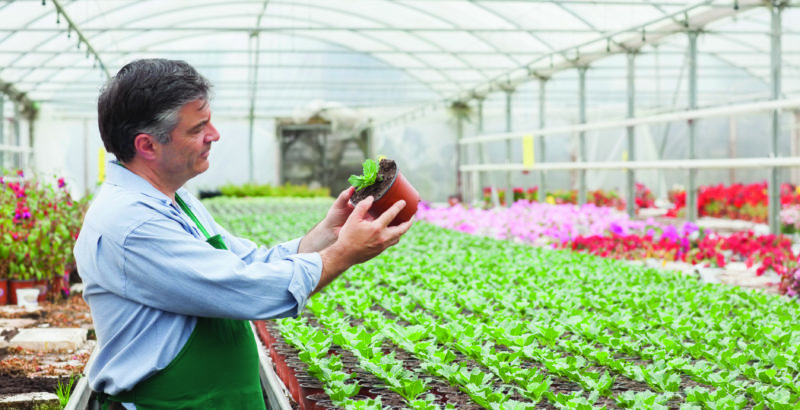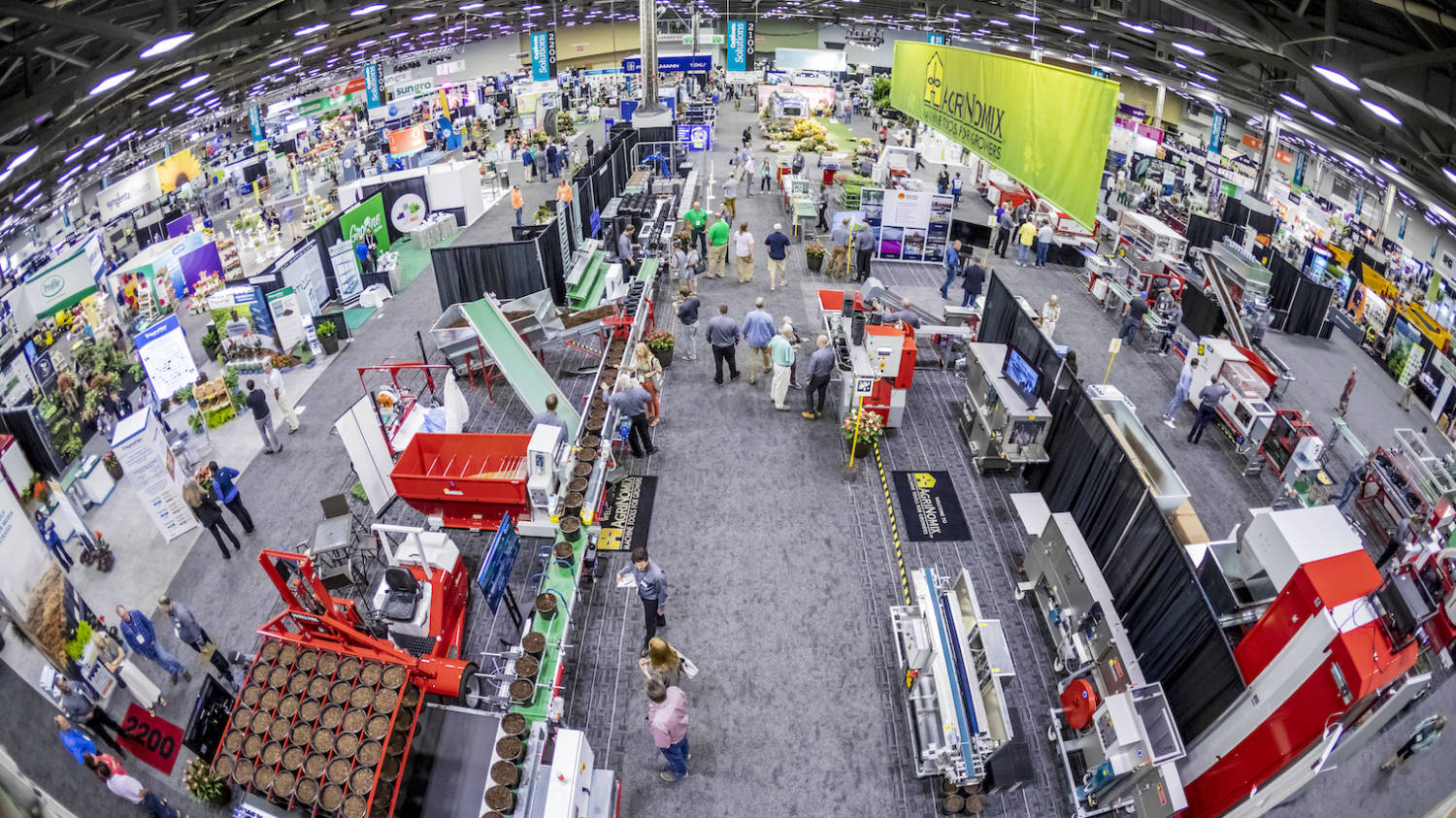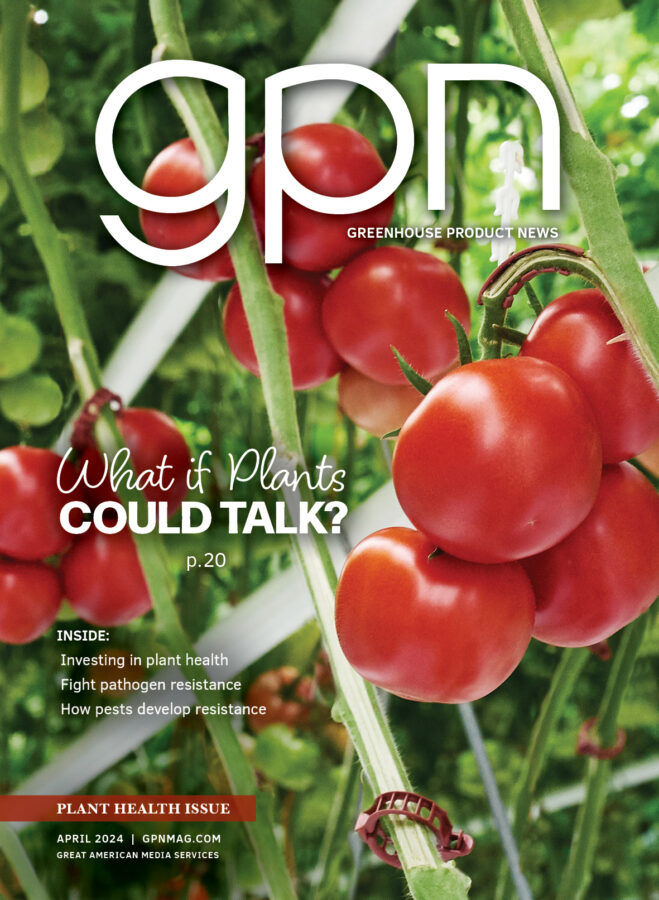
Using a PGR to Rescue Plants from a PGR
Growers have long known and leveraged plant growth regulators
to control height. The combination of benzyladenine (BA) and
gibberellic acid (GA) is a very effective tool for accomplishing this.
While the benefits of these PGRs for enhancing growth are well known, Fine Americas discovered — while researching and refining the use of Fresco as a drench application — that this product can also be used to overcome overapplication of growth-inhibiting PGRs like paclobutrazol or uniconazole. An additional benefit Fine discovered is that if plants are stalled, the Fresco drench application can effectively restart the plants’ growth — often saving the crop and a production cycle.
Situations can necessitate a kick start in plant growth. If a grower has just applied a growth-inhibiting PGR, and then their customer moved up the order, Fresco drenches can help. It could also be that a grower has a deadline for a liner order, but the plants just aren’t taking off the way they should. Fresco can get plants growing with good structure. Previously, GA and BA products could only be applied as a foliar spray, which would not have as much impact on growth. Today, you can hit the stalled plants with a Fresco rescue drench, and restart their growth.
Although the spray version of Fresco has been around for years, spraying the PGR will not overcome overapplications of growth-inhibiting PGRs. However, a drench to the roots does a good job of giving an even response throughout the plant. This makes the product more effective in a way that it wasn’t as a spray. Fresco is the only GA4+7 and 6-BA product registered for drench applications.
Through our research, Fine discovered that certain plant species and
cultivars are ultrasensitive to paclobutrazol. Those are the crops that are most susceptible to overapplication. They include New Guinea impatiens, ageratum, begonia, impatiens and viola, to name a few.
THE SCIENCE BEHIND SAVING CROPS
Fresco has been proven to effectively reduce leaf yellowing in lilies, as well as encourage poinsettia bract development. But how does Fresco work as a rescue drench? Fresco is a combination of 1.8% gibberellins A4+A7 [GA4+7] and 1.8% benzyladenine [6-BA]. GA stimulates intermodal elongation, while BA enhances the growth of axillary or lateral shoots.
So Fresco is used to encourage growth in plants in two ways. Gibberellins (GA) are hormones in plants that cause the cells to elongate, resulting in the plants growing taller or stretching. Fresco
also contains cytokinins, in the form of 6BA, which stimulate plant growth and branching through cell division. These two components, by acting on both cell elongation and cell division, help promote a more uniform/better structured growth, rather than just causing rank uncontrolled growth.
So, together these two actives are helping to elongate stems while also helping plants grow fuller and more marketable. This dual action wakes the pathways in the plants to help push plants out of stalls caused by overapplication or other factors. Together, they stimulate plant growth in a very controlled manner.
HOW TO USE FRESCO DRENCHES
Who would have thought to use a PGR to rescue plants from a PGR? If you or one of your growers applies a growth-inhibiting PGR such as paclobutrazol at a too-high concentration, you may see delayed
flowering. Or, more seriously, plant growth may slow or even stop. While researching effective PGR techniques, Fine Americas found that a drench with Fresco can help pull plants out of a stall, sometimes in as little as one application. (Foliar sprays to leaves of stalled plants won’t transport Fresco easily through the plant.)
Typically, we suggest applying 2 to 5 ppm, then waiting five to seven days. Crop, variety and the severity of the situation will all impact your approach. You might try a test area first, if you have time. How ever you decide to proceed, start with the lower rate.
Media should not be wet, but merely moist. Be sure to cover root systems thoroughly — look for very little run through out of the container bottom. This makes it important to use a sufficient amount of water, and increase the volume proportionately with pot size. For example, you’d use 3 fluid ounces for a 5-inch pot, but when you jump to an 8-inch pot you’ll need 10 fluid ounces. Sub-irrigation may require a different level. If you are applying via sub-irrigation, you may want to reduce the rate by as much as half.
You don’t want to go too high with the rate or reapply too quickly and end up with too much stretch. So wait at least five to seven days after the first drench; check the crop thoroughly, and assess for stem elongation and expanding leaves. If it isn’t where you want it, reapply again at 2 to 5 ppm.
Fresco is registered for most ornamentals, such as chrysanthemums, gardenias, azaleas, hydrangeas, poinsettias, petunias, marigolds and others. Always read and follow label directions.


 Video Library
Video Library 




















